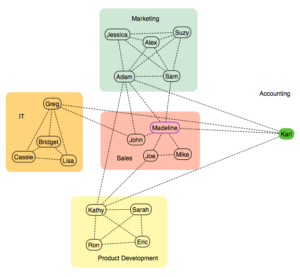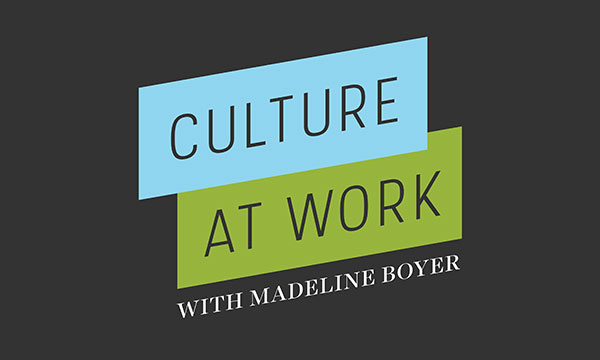In this episode, I reveal a little bit about where I grew up, the social networks that maintain the legacy of the Panama Canal Zone, and why understanding social networks is important to organizations.
Here is an example of the office network map that is mentioned in the episode:
 I started with myself at the center and thought of all of the (imaginary) people I have interactions with. Then I reflected on who else connects with each other:
I started with myself at the center and thought of all of the (imaginary) people I have interactions with. Then I reflected on who else connects with each other:
- There are fewer connections between the departments than there are within
- e.g. Everyone within Marketing is connected to each other in some way, but only Adam and Sam have connections outside
- Karl from accounting and Adam from Marketing seem to be very well connected across departments
- They may be the first people to talk to if I’m ever trying to work on cross-departmental initiatives
- I am really only connected to Marketing and Accounting, and not Product Development or IT directly
- I may want to work on developing more relationships to become more effective
USE THIS TOOL:
The easiest way to create a network map is to start out on paper. There are many software tools, both desktop and online, that can help you digitize and amend over time. In this example, I used Scapple on my Mac.
It can be helpful to label the lines between individuals to show how/why they are connected: project X; on Y committee; company softball teammates; both went to Notre Dame undergrad.
Good luck!
This week’s Culture At Work Challenge:
Share your experiences with social capital at work. How do networks function in your company? Do people work in siloes, or do strong connections exist between departments?
Reach me on twitter @madelineboyer with the #cultureatwork hashtag.
And learn more about how I can positively affect your culture at work at my website at percipientpartners.com.


